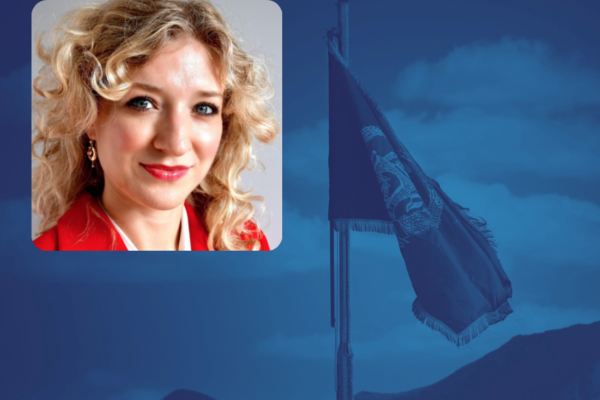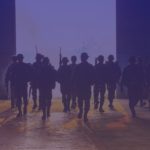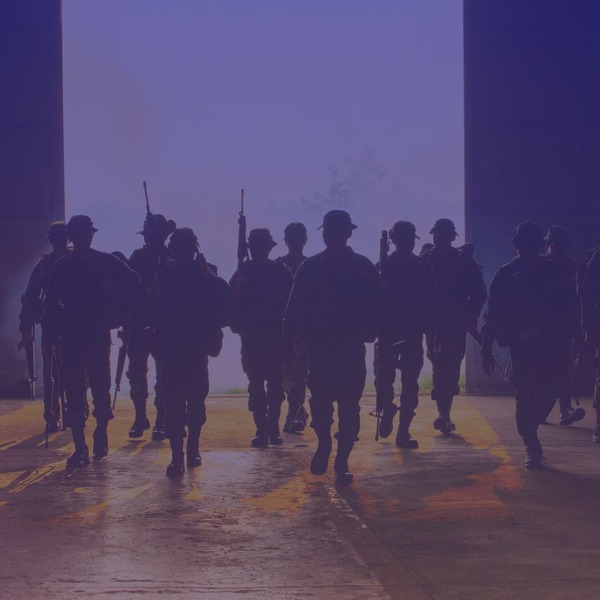
This is part one of an interview by Piero Dal Poz
On the night of July 30th, 2021 the last remaining NATO military soldier left Afghanistan. It was considered the moment that formally ended the American-led intervention in Afghanistan, as the whole world saw the photo that captured the moment. This conflict began in October 2001 and lasted almost twenty years, so long to define a generation. Now the war is over and the Taliban, who ruled the country before, are back to power. It has been said a lot during those agitated moments, but often too much taken by the emotions of the moment. Several months after the end, after letting the steam of the moment blow off, Piero Dal Poz sits down with Dr. Joanna Siekiera to analyse with a clear head the successes and the failures of the NATO mission.
Dr. Siekiera is an international lawyer and a Doctor of Social Sciences in public policy sciences from Poland. She currently works at the Faculty of Law, University of Bergen in Norway on the legal consequences of ocean change and sovereignty of states in Oceania. She worked in the Polish diplomatic missions, the Institute of Cultural Diplomacy in Germany, the School of Humanitarian Law in Russia, the United Nations CIMIC Training School, the French Institute of International and Strategic Affairs, and NATO. She lectured at the University of Wrocław and the War Studies University in Warsaw in Poland, also serving as a legal advisor (LEGAD) during international military exercises. She is the author of over 100 scientific publications in several languages. Dr. Siekiera has been cooperating with the NATO Stability Policing Centre of Excellence since February 2021 as an external subject matter expert (SME) in legal matters. Her areas of expertise are the South Pacific region, Pacific Ocean governance, science diplomacy (ocean diplomacy), and the law of armed conflict (legal advising, NATO legal framework, Central Europe, security in the South Pacific, gender in armed conflict).
Piero Dal Poz is a 3rd year undergraduate student in Philosophy, International Studies and Economics at Ca’ Foscari University Venice. His main areas of expertise are the internal dynamics of the state of Israel and the strategic action of the People’s Republic of China. At the European Student Think Tank is a writer for the Foreign Policy section.
Let’s start with a provocative thought: for twenty years two different wars have been fought in Afghanistan, with different priorities, goals, and narratives. The first was the one of the United States and the other one of the European countries. Do you agree? If not, why?
I must disagree with this statement which does not lead anyhow to the unity of the allies but somehow seeks for an artificial division between the US and the EU. Why? Before we come closer to this topic, as I always repeat to my students, both civilian and military, whenever we observe an action in international relations, there must be some benefit for a party (or parties). Someone, a state, a political party, a leader, could be a military leader too, a transnational company, needs to have a profit in such a movement of things (political decisions, business transactions, passed bills). Thus, we should ask a question: who could benefit the most from the division of the Western world, along with its set of western values? Russia? China? Both of those regimes?
We all know that it is far easier when we take into consideration shared values, culture, including legal culture, history, approach to politics and religion, to cooperate within the circle of your neighbouring states rather than with countries from different continents or geopolitical regions. For the transatlantic alliance, NATO, the strength lies in unity. Also, the motto launched so much on the social media is #StrongerTogether.
For Americans and Europeans, the higher value is human life. Just please look at the efforts made in Western countries, where, in order to protect even one human life, enormous sources of public services are being engaged. This does not occur in China ruled by the Chinese Communist Party. Due to the far different approach to human life (the life of its own citizens), the highest value is the country – the community for which all are expected to sacrifice something, mostly freedom and very often life.
When it comes to the Taliban, in the self-created Islamic Emirate of Afghanistan, they are a jihadist political movement and military organization, terrorists. Their motives are undeniably different from ours, “Western” ones. That is exactly why we often refer to the mission in Afghanistan as a clash of civilisations, so far from each other, where many often soldiers and civilian personnel, but also contractors, were not prepared enough (if at all) for such “cultural shock”. This not only made their deployment harder but many times affected their ability to accomplish the mission – again we need to underline that, not only a military mission but also a humanitarian one, to protect and empower the local population of the Afghan people.
What do you think were the major causes that lead to the failure of the whole mission?
First of all, my intention here is not to review the military or political activity during the whole operation in the Islamic Republic of Afghanistan, the NATO-led operation under the leadership of the United States. What is more, we shall not analyse or rather assess the course of the anti-terrorist coalition withdrawal, followed by the rapid formation by the fundamentalist Islamist group of a new international legal entity, which they called the Islamic Emirate of Afghanistan. Many valuable analyses have been written about these matters, as still, we miss many puzzles. What is missing here is the cultural aspect, exactly what we are discussing now.
We cannot forget the dramatic situation of women under the Taliban rule, which is certainly a subject to be concerned about. Yet, I sadly must admit public opinion quickly forgets the hot spots and changes its focus on other conflicts or harsh situations. A year ago, protesters came to march on the Belarusian streets against the Alexander Lukashenko totalitarian regime. I could not believe that most of the Western observers were relieved as they truly believed that Belarusian would win democracy like that. No, ladies and gentlemen, it is, again in cultural matters, far more complex, especially not understanding the post-communist countries, the former Soviet citizen type of person, and finally totalitarian rule unwilling to pass away the power.
The same, therefore, was the case in Afghanistan. When the coalition left, infamously, the Kabul airport, I knew the situation of girls and women, especially them, but also collaborators of the American contingents, translators, engineers, teachers would deteriorate drastically. Yet, we could read many “naïve” statements from the Western public opinion that Afghan women should just fight against the new legal structure (strict Sharia law understood by the fundamentalists). At what price? Being raped, killed, or tortured, for instance by throwing acid into the face for going to school or refusing to marriage? I will repeat that – one size DOES NOT fit all. We cannot expect the same democratic tools and means will be suitable for everyone everywhere. How many centuries has Europe been building democracy? And we wanted to transform the Afghan nation into a democracy in just two decades?
We often hear about the progress that the Afghan people, especially talking about women, experienced under the new state. Some say that it was not a real picture of the new Afghanistan, others instead say that that was a concrete example of what the state-building efforts were able to produce. Which version do you prefer?
Well, shall we put my personal preferences aside and focus on pure, very often unflattering facts, please? Reading the reports of the largest international organisations, both governmental – mainly UN or NATO – and non-governmental – such as Amnesty International or Human Rights Watch – and analysing the current situation of the civilian population in Afghanistan, including the so-called vulnerable groups (women and children), we have to be aware of the huge difference towards those most vulnerable groups across last 20 years since 2001, when the United States had used the famous Article 5 of the North Atlantic Treaty. Those two decades were full of not only military activities sensu stricto, but also humanitarian and training accomplishments, including education, both in relation to the armed forces of the Islamic Republic of Afghanistan – both men and women – and the civilian population. The central and local government sectors have gained a lot, both in terms of management know-how through courses, training, and instruction, but also in many attempts to form a democratised (deliberate use instead of the word “democratic”) form of administration. Here, without entering into a discussion about the legitimacy of the entire conflict led by the American armed forces, truth should be given, and I need to underline the enormous amount of expenditure on international training. Some sources point to $760 million spent by the US on education in Afghanistan, but I am sure there has been much more, including intelligence training. Again, the education and training activities were performed not only to improve the comfort and safety of Afghans but above all to pursue this desired “cultural transformation” as we have in the West.
Indeed, the fall of the Taliban regime allowed for some significant changes and progress in human rights, mostly women’s rights, and open education. In 1999, not a single girl was enrolled in secondary school, while only 9,000 girls attended primary schools. Already in 2003, as many as 2.4 million girls attended the school. This figure is currently around 3.5 million, with as many as one-third of students in public and private universities being women.
As humanitarian organisations, mostly UNICEF, have been warning for a long time, still over 3.7 million Afghan children do not attend school. More than half of them are girls, deliberately not sent to educational centres located far away from their homes, due to, firstly, the danger associated with the ongoing armed conflict, and secondly – their cultural role, where help in the household (or agriculture) is imposed on females.
Until the Taliban announced the re-constitution of the Islamic Emirate of Afghanistan this year, Afghan women proudly participated in public life, were holding political office, and to a lesser extent – still though – pursued business opportunities. More than a thousand Afghan women had set up their own companies by 2019, which is a huge civilization leap as that number was zero due to the legal ban imposed by the Taliban before the entrance of the anti-terrorist coalition in 2001.
Additionally, according to the statistics of the World Bank and the United Nations, 27% of Afghan members of parliament were women, and 20% was the percentage of women among the clerks in both central and local government administration, but also in the armed forces, police, or other law enforcement services. It was connected with an amendment to the constitution. The constitution was amended to allow women to legally hold at least 27% of the seats in the lower house of parliament. A country so large in area (652,230 km2), but also in numbers (37.5 million people), under the Taliban regime collapsed economically, in terms of civilization and infrastructure. It is difficult to imagine life without the Internet and cell phones, while these two benefits of technological development were unavailable to ordinary Afghans. Only at the beginning of this year, though still a significant change brought about by the intervention of the armed forces of the anti-terrorist coalition, about 11% of Afghans had access to the Internet, and over 60% had a mobile phone. However, according to UN statistics, frequent interruptions in the operation of mobile services seriously affect communication, including mutual alerting and sharing information about security threats.
Finally, the Muslim burqa, imposed during the Taliban rule, was lifted during the cultural “thaw” period, after the Taliban were removed from power by the anti-terrorist coalition. Under the rule of the terrorists who took control of Afghanistan already in 1996, a very strict interpretation of Islamic law was imposed. Women were forced to cover themselves (not just their faces) and leave the home only with a male relative. The Taliban also banned girls from going to school and women from working outside the home. They were also forbidden to vote. Additionally, which is not often mentioned due to political correctness, women were subjected to cruel punishments for non-compliance with the rules imposed by the Taliban customs, including beatings, various forms of torture, and stoning. A woman could be found guilty of adultery (the definition of adultery could be a topic for another interview, but I have to mention that according to the Sharia Law, it is a sexual act, intercourse with a person not married to each other, but this definition only opens a long catalogue of crimes, where even a “lustful” look may be considered as a crime and be subjected to the punishment of stoning) by a court made up of (only) men on the basis of the testimony of (only) male witnesses. I must add here that Afghanistan then had the highest female mortality rate in the world, including young and very young mothers.
On August 15, 2021, the Taliban announced the re-constitution of the Islamic Emirate of Afghanistan, a nomen est omen state not yet recognized by any other state. Although this situation, due to political reasons, will most probably change, as it was the case with the annexation of the Ukrainian Crimea by the Russian Federation.
Everything that has been achieved in the field of women’s rights over these 2 decades is certainly already in the past. The one who puts faith in the assurances of terrorists that the fate of women in Afghanistan will not change is extremely naïve.
Afghan terrorists are exacerbating the violence, encouraged by the lack of resistance from Afghan military and police forces, with minimal, if not zero, international pressure, including a famous appeal by UN Secretary-General António Guterres, who asked the Taliban to “stop the offensive immediately”. For Afghan women, the Taliban’s growing power heralds a return to the deadly past, as well as truly bloody revenge for years of “freedom” under the anti-terrorist coalition. Since the beginning of July 2021, the Taliban have ordered local religious leaders to provide lists of girls (over 15) and widows (under 45). The goal here was to get them married in order to recreate the living strength of their army. This sounds unbelievable from the point of view of a reader brought up in the Western culture.
Therefore, it should not be anyhow surprising that Afghan women and their families destroy all evidence of their “Western” lifestyle, such as school reports, certificates, or training materials from courses or other forms of education, as well as participation in political life, voting or conducting election campaigns. After all, this is the only way to save the health, if not the life of Afghan women and their loved ones from the bloody vengeance of the Taliban.
Therefore, we must be aware that all achievements gained with Western support over the past 20 years, especially in the fields of education, employment, and political participation, are disappearing. Offering “wives” is an inhumane and unlawful war strategy designed to lure militants into joining Taliban troops. It is not less than sexual slavery, anyhow called a marriage, also in the light of Islam. Forcing women into sexual slavery under the guise of marriage is also a war crime and a crime against humanity. Article 27 of the Geneva Convention for the Protection of Civilians in War states that “Women shall be especially protected against any attack on their honour, in particular against rape, enforced prostitution, or any form of indecent assault.”

 Is EU citizenship for sale – or for keeps? A critical analysis of the CJEU’s Golden Visa ruling.
Is EU citizenship for sale – or for keeps? A critical analysis of the CJEU’s Golden Visa ruling.  The European Union in Space: From exploration and innovation to security and autonomy
The European Union in Space: From exploration and innovation to security and autonomy  The Rise of the Right: The Threat Right-Wing Extremism Poses to Women and Feminist Efforts in Germany
The Rise of the Right: The Threat Right-Wing Extremism Poses to Women and Feminist Efforts in Germany  The silent shield – how special operations safeguard the global supply chain
The silent shield – how special operations safeguard the global supply chain 


